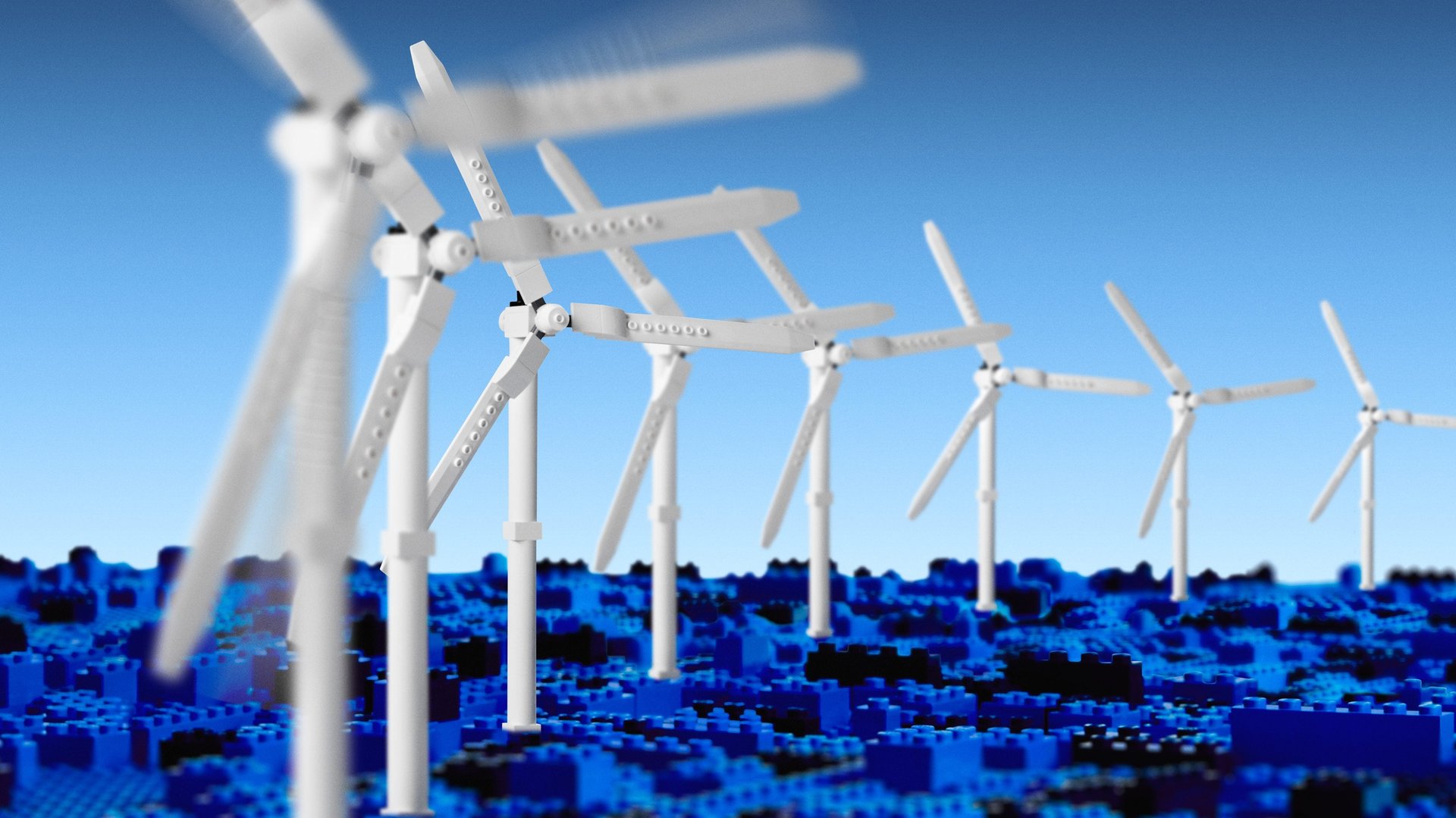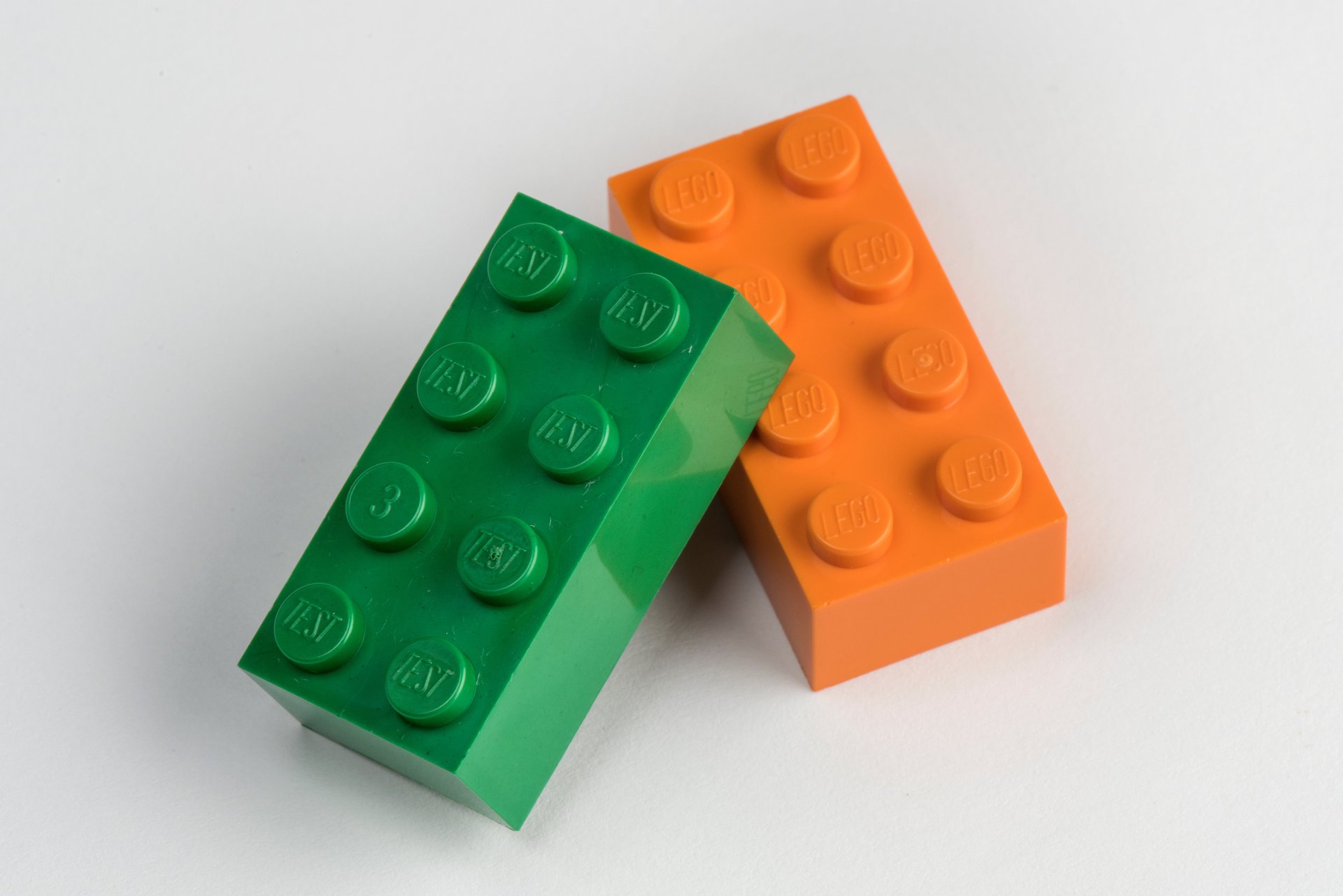Lego wants to solve the world’s plastics problem with a biomaterial that can survive generations of play
In March, the Lego Group unveiled the world’s tallest Lego wind turbine to celebrate having met its 100% renewable-energy target three years ahead of schedule.


In March, the Lego Group unveiled the world’s tallest Lego wind turbine to celebrate having met its 100% renewable-energy target three years ahead of schedule.
The 30-ft-tall wind turbine built from 146,000 Lego bricks pays tribute to the Burbo Bank Extension offshore wind farm near Liverpool, UK, one of Lego’s investments in wind energy totaling $940 million since 2012. Companies often meet (or even beat) ambitious renewable energy targets by investing in clean electricity—such as wind power—to offset traditional electricity consumption. Once Burbo Bank began producing electricity in May, the total output of clean energy from Lego’s investments was enough to offset the power used by the company’s factories, offices, and stores worldwide.
Many big brands have set renewable-energy targets to help reduce their carbon dioxide footprints, but a recently published study concludes offsetting carbon emissions by investing in renewable energy isn’t enough to save the planet. We’ll also need to actually reduce carbon emissions. In 2015, Lego set another target: replacing 20 types of conventional plastics used in making its bricks with sustainable materials by 2030 to help curb the company’s total carbon dioxide emissions.
The Denmark-based toy maker invested $155 million into a Sustainable Materials Center, where materials specialists are exploring alternatives to plastics made from fossil fuels. Lego attributes just 10% of the carbon dioxide emitted during the lifecycle of Lego bricks to the company’s own factories, offices, and stores. The other 90% comes from sources outside its direct control, such as product transport and distribution—and from the making of the tiny plastic chunks it sources from materials suppliers to build its bricks.
In fact, about 4% of the annual consumption of petroleum worldwide is used to make plastic, and another 4% is used to power plastics-manufacturing processes, according to a 2015 study by the Worldwatch Institute, a Washington, DC-based environmental research group.
One solution is bioplastics, which are derived from plants, other biodegradable materials, or both. Bioplastics currently represent just about 1% of plastics produced, but their market is growing at more than 20% a year. Maximilian Lackner, an author on climate-change mitigation and university lecturer on materials science in Vienna, says the trend can be explained by increased consumer awareness of the environmental costs of conventional plastics. In addition, he notes, recent product innovations have helped bioplastics begin to shed their image as smelly, poor-performing alternatives to conventional plastics. Companies that voluntarily comply with standards such as Europe’s EN13432 —designed to measure factors like compostability, for example—gain credibility in the eyes of their consumers.
Conventional plastics have been historically cheaper, but the cost of bioplastics has come down enough to lure some big brands. Coca-Cola, for example, has distributed 35 billion plant-based bottles in 40 countries, eliminating an estimated 315,000 metric tons of carbon dioxide emissions. The beverage company’s ultimate goal is to find a 100% sustainable, responsibly sourced material for its bottles that is fully recyclable.
Lego wants the same from any sustainable alternative to the 20 conventional plastics now used in their products. Substitute materials also must be as durable as current plastics used, such as the incredibly tough, oil-based ABS (acrylonitrile-butadiene-styrene), and as perfectly interlocking and backwards compatible as every Lego brick made since 1958.
Tim Brooks, vice president of environmental responsibility for the Lego Group, oversees the work of the Sustainable Materials Center’s 70 experts whose challenging job includes meeting the company’s exacting standards for product safety, quality, and durability. Every potential bioplastic is tested for strength, stiffness, dimensional stability, and impact strength—measured by whether an element could break or splinter during play. “I’m about to pass on the Lego bricks I played with as a child and the bricks my dad passed down to me to my son,” says Brooks. “We know Lego bricks are often passed down through generations—making it so important that the sustainable materials chosen for our products be extremely durable.”
Every Lego element demands something different from a sustainable material. Bricks require tough materials like ABS; axles and gear wheels need strong materials with low friction; small connectors require strong material that is also stiff; and tires should be soft. “We want any bio-based material to be capable of being precisely molded, or to mold to just a few microns,” says Brooks, “and we want it to be shiny.” Brooks pointed to a side-by-side comparison of two green Lego bricks: one a sample made of wheat sugar and the other a traditional plastic. The test brick’s color was dull and flat compared with the shiny, bright-green traditional brick.

Despite the challenges, Brooks is confident the company will identify bio-based materials it can make work for their products—and knows it’s something Lego needs to do to be successful in the age of climate change. Brooks says, “We know that making bricks has an impact on the planet, and we want it to be a positive one.”
Lackner says Lego’s commitment is huge. If more large companies would commit to sourcing sustainable plastics, it could significantly limit the extensive environmental damage that comes from burning fossil fuels to produce 300 million tons of plastics worldwide every year. “The big players can change the game,” says Lackner.